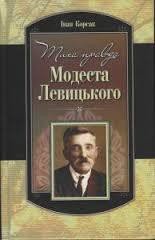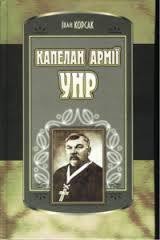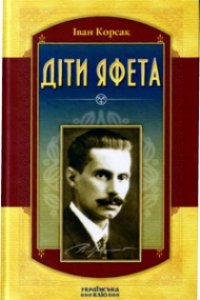Імена твої, Україно - Корсак Иван Феодосеевич "Korsak" (читать лучшие читаемые книги TXT) 📗
[15] «Згідно з переказами, Святий Апостол Андрій Первозванний проповідував
Євангеліє в Скіфії, на землі, де пізніше утворилася Русь. Піднявшись на Київські
201
пагорби, він поставив там дерев’яний хрест та передбачив, що на цій землі світитиме
справжня віра Христова.
Святий апостол вирушив майбутньою руською землею від київських пагорбів до
Новгорода й навіть був на острові Валаам. Це засвідчують останні історичні докази.
Переказ місцевих північних русів показує, що Апостол Андрій Первозванний,
просвітитель Скіфів та Слов’ян, пішов із Києва до Новгорода…
Про це згадується у давньому манускрипті «Оповєд», який зберігається в
бібліотеці Валаамського монастиря: «Св. Андрій із Єрусалима відвідав Голіад,
Козоч, Роден, Скитію, Скіфію та Славонію, проходячи через безмежні луговини
(степи), дійшов до Смоленська та місцевої оборони біля Скоту Великого Слав’янську.
Покидаючи Ладогу, він поплив човном через штормове, неспокійне озеро до Валааму,
розміщаючи кам’яні хрести та освячуючи все знаком хреста…»
[16] http://findarticles.com/p/articles/mi_m1310/is_1988_June/ai_6552806,
A thousand-year heritage – Christianity in Russia
UNESCO Courier, June, 1988 by Metropolitan Juvenaly:
«The first seeds of the faith had, however, begun to sprout from the soil of what was
to become the State of Rus’ as early as the first century AD, the Age of the Apostles.
According to one thesis, St. Andrew, the «first-called», carried out missionary activities in
the region. This thesis is confirmed by a tradition related to this saint in the first-to third-
century Christian communities of the northern Black Sea coast. Excavations of churches
of this period at Chersonesus, Tanais and the ancient city of Aksaiskoe (or Kobyakovoe)
have yielded moulds which were used for making communion wafers and which are
patterned with the distinctive X-shaped cross of St. Andrew rather than the more familiar
upright cross».
[16] Митрополит Ювеналі «Тисячолітній спадок – Християнство в Росії»
Кур’єр ЮНЕСКО. – 1988. – Червень:
«Однак перші зерна віри почали проростати із ґрунту того, що пізніше стало
державою Русь, в першому столітті нашої ери, у столітті Апостолів. Згідно з однією
тезою, Св. Андрій Первозванний на цій території проводив місіонерські діяння.
Ця теза підтверджується переказами, пов’язаними з цим Cвятим в християнських
общинах І–ІІІ століття, які проживали на північному березі Чорного моря. Розкопки
церков цього періоду у Херсонесі, Танаїсі та в древньому місті Акзаіское (чи
Кобяковоє) виявили форми, які використовували для виготовлення облаток для
причастя, і які є розмальовані чітко вирізненим Х-подібним хрестом Андрія
Первозванного, а не більш відомим вертикальним хрестом».
[17] http://www.holytrinity-la.org/engl/pages/general/hist3.html
History of the Holy Orthodox Church
Part III – Orthodoxy in Europe and America:
«The Apostle Andrew, one of the original twelve disciples of Jesus, preached the gospel
of Christianity in Greece and along the northern shores of the Black Sea. He continued
202202
his missionary work northward and visited the area known as Skiphia (now Russia). He
journeyed as far north as the city of Novgorod.
Arriving in the region where the city of Kyiv is now located, St. Andrew ascended the
hills and planted a cross on the Mountainside. He then made an historic prophecy that from
those hills would shine the light of divine grace, that many churches would be built, that a
great city would arise and that Christianity would spread throughout the country.
The cross planted by Andrew was later preserved in a beautiful church built on the
mountain in the area that bore his name. St. Andrew continued on through the Caucasus
to the Southern shores of the Black Sea and then went on to Constantinople. There he
ordained priests and deacons and to establish the church hierarchy in Russia».
[17] Історія Святої Православної Церкви
Частина ІІІ. Православ’я в Європі та Америці:
«Апостол Андрій, один із дванадцяти учнів Ісуса, проповідував християнське
Євангеліє у Греції та вздовж північних берегів Чорного моря. Він продовжив
місіонерську роботу, просуваючись на північ та відвідав територію, відому під
назвою Скіфія (тепер Росія). Він настільки просунувся в північний бік, що підійшов
до міста Новгорода.
Прибувши в регіон, де зараз розміщене місто Київ, Св Андрій піднявся по
горбах та поставив на пагорбі хрест. Тоді він сказав історичне пророцтво про те, що
з тих пагорбів світитиме проміння божественної слави, що буде побудовано багато
церков, що з’явиться величне місто, і християнство пошириться по всій країні.
Поставлений Андрієм хрест пізніше був занесений на збереження у гарну
церкву, побудовану на горбі в місцевості, яка має його ім’я. Святий Андрій вирушив
далі через Кавказ до південних берегів Чорного моря, а потім до Константинополя.
Там він посвятив у духовний сан священиків та дияконів, щоб встановити церковну
ієрархію в Русі».
[18] http://209.85.129.104/search?q=cache:fa2b6ECgydUJ:el.wikipedia.org/wiki/
CE%A3%CF%85%CE%B6%CE%AE%CF%84%CE%B7%CF%83%CE%B7:%CE%
91%CF%80%CF%8%C%CF%83%CF%84%CE%BF%CE%BB%CE%BF%CE%B9+
andrew+first+called+Kyiv&hl=ru&ct=clnk&cd=148&gl=ua&client=firefox-a
The Anchor Bible Dictionary (Freedman, David Noel, ed., [New York: Doubleday]
1997, 1992):
«Sometime in the 8th century, however, Andrew was pressed into service to legitimate
Byzantine claims to apostolicity. For centuries, the church in Rome had claimed Peter as its
founder. On the other hand, Byzantium, largely the product of Constantine’s relocation of
the imperial capital to the E, could claim no founding apostle. This was not so problematic
when Rome and Byzantium were on good terms, but when the two great ecclesiastical
centers parted ways; Byzantium was in desperate need of apostolic pedigree. Andrew was
perfectly suited for the purpose. According to the gospel of John, he was the first of the
apostles to come to Jesus, and later he brought his brother Peter, Rome’s favorite, to the
Lord. The Acts of Andrew and traditions derived from it had placed Andrew’s ministry
in the region of the Black Sea, and if one can trust the epitome of Gregory of Tours, the
Acts in fact sent the apostle to Byzantium. Furthermore, from the time of Constantius II,
Andrew’s relics reposed in Constantinople’s Church of the Holy Apostles.
203
Such long-standing associations between Andrew and the city generated a legend that
when Andrew, the Protokletos (First-called), visited Byzantium he appointed as bishop
Stachys, who inaugurated an unbroken line of bishops. In the 9th century, soon after the
origin of this legend, several versions of his passion appeared along with three different




